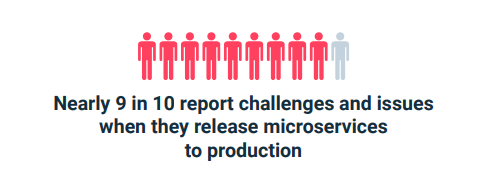
Despite having become mainstream over the past few years, many organizations still struggle with actually releasing microservices into production.
According to the State of Cloud-Native Release Orchestration 2021 report from Vamp, 72% of respondents use Kubernetes and 81% use microservices in production, but nearly 9 in 10 respondents report challenges and issues when releasing microservices into production.
Eighty-six percent of respondents still use high-risk release strategies like rolling updates, blue-green, and big-bang releases. Canary releases are considered a low-risk release strategy, but only 9% of respondents utilize it.
Vamp explained in the report that validation of software in production is still a largely manual task. “Release validation is the process of making sure that released software that’s running in production is meeting the requirements in terms of performance, quality, customer experience and business KPIs,” Vamp wrote in a blog post explaining the report. On average, it takes 2.2 hours and four people to tackle each release, Vamp explained.
Rollbacks — which help to create a safety net to minimize impacts to customers when issues occur — are also largely still a manual process. Fifty-three percent of rollbacks were done manually and took an average of 45 minutes to complete.
The report revealed that dependency management is the biggest challenge when it comes to releasing microservices in production. Twenty percent of respondents struggle with dependency management, 14% struggle with internal processes and communication, and 10% find validating changing and testing microservices a challenge.
Moving forward, 30% of respondents hope to focus on automating continuous delivery and release processes in 2021.








